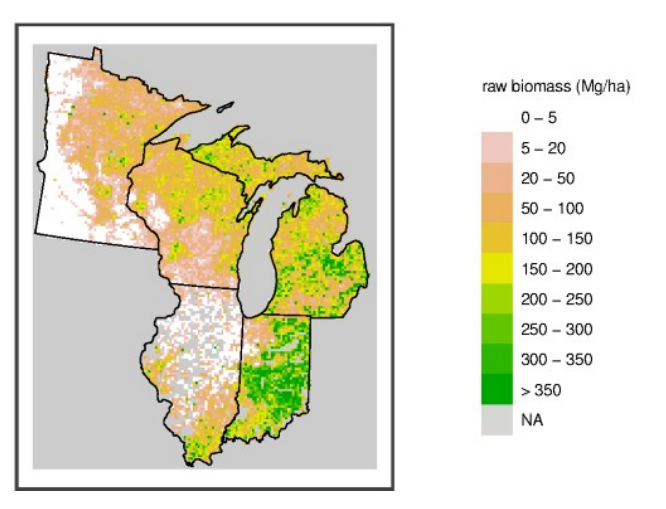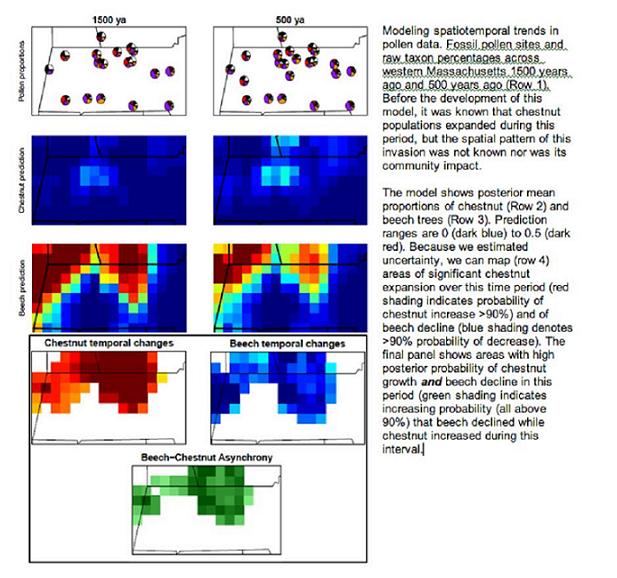
In eastern forests, changing climate and land-use are affecting forested ecosystems in ways that will have important economic and ecological consequences for centuries. Decisions we make now will have sustained impacts on these trajectories (e.g., shifts in net carbon sequestration, forest composition, and fire regime), so it is important that we develop reliable forecasting and assessment tools. Forests in eastern North America have rich historical data about past ecosystem change including historical forest surveys dating back to the settlement era, fossil pollen and charcoal records from sediments, and various paleoclimate proxies.
For paleoecological data to inform ecological forecasting at regional to continental scales, it must link networks of biotic and abiotic change in the context of process-based modeling efforts. For this to be successful requires that we bring paleoecologists, statisticians, and ecosystem modelers together.
PalEON is an interdisciplinary team of paleoecologists, environmental statisticians, and ecosystem modelers with the goal of producing rigorous and robust reconstructions of past ecological variables for the purpose of initializing and validating terrestrial ecosystem models. Specific aims include:
- Developing a coherent inferential framework with rigorous estimates of uncertainty for the purpose of reconstructing ecological variations in forested ecosystems for the last 2000 years from the Great Lakes to New England.
- Applying these reconstructions to test the process-based ecosystem models being used to forecast ecosystem dynamics, with emphasis on processes operating at decadal to centennial scales. These processes are essential to 21st century ecological forecasting, yet remain poorly constrained by ecological observational datasets.
- Conducting systematic and coordinated field campaigns to collect new paleorecords from the northeastern US that are based on priority gaps identified by the PalEON data-assimilation and model-validation working groups.
- Gaining a richer understanding of how climate variations across a range of timescales have shaped the composition and function of forested ecosystems.
To learn more about the PalEON, visit the project website at paleonproject.org.
Specifically, in the McLachlan lab, we are exploring how forests are changing from the 19th century in Illinois, Indian, and Ohio by digitizing and aggregating historical forecast survey data from Public Land Surveys. You can find more details about this project on the Settlement Vegetation website. Data compiled by the McLachlan lab have been used for analyses like those pictured below from Paciorek et al 2021 to calculate 19th century biomass in the Midwest.


